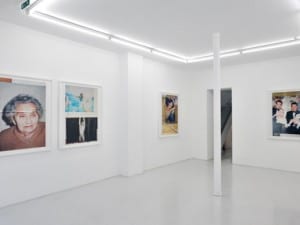The first major retrospective of the London-based photographer Dorothy Bohm, A World Observed 1940 – 2010, will open this April at Manchester Art Gallery. Bohm is widely acknowledged as one of the doyennes of British photography. She was born in Königsberg, East Prussia (now Kaliningrad) in 1924, and has lived in England since 1939.
This comprehensive exhibition brings together over 200 photographic images, many of them seen in public for the first time, tracing Dorothy Bohm’s career which spans more than six decades and several continents. Curated by her daughter, Monica Bohm-Duchen and Colin Ford, this riveting exhibition showcases a wide array of photographs that document a rapidly changing world in the second half of the 20th and early 21st centuries. Bohm’s images are aesthetically striking, visually sophisticated, yet deeply humane and immediately accessible.
A World Observed 1940 – 2010 opens with a selection of Bohm’s work as a student at Manchester College of Technology (from which she graduated in 1942) and of the portraits she produced while working first at Samuel Cooper and then, from 1946, in her own Studio Alexander in Market Street, Manchester. These portraits will be displayed in a reconstruction of her studio, while a separate replica darkroom will demonstrate the now almost forgotten technique of black and white photographic processing – staging an important historical aspect of the photography process.
The next segment charts her discovery of open-air photographer when she began to spend time in the late 1940s and early 1950s in the artists’ colony of Ascona, in the Ticino, Switzerland. By the late 1950s she rejected studio portraiture for so-called “street photography.” With her husband Louis Bohm (a fellow émigré from Nazi Europe, whom she met when they were both students in Manchester) she travelled widely, and her work of this period provides fascinating insights into the changing face of post-war Europe, as well as the USA, the USSR and Israel.
The first time Bohm experimented with colour photography was in 1956 on a visit to Mexico. However, the first consistent body of colour was unveiled almost three decades later, in the early 1980s, when she explored the potential of Polaroid photography. In 1984, on a visit to the Far East, Bohm used Kodak colour film for the first time, and thereafter abandoned black and white entirely. Since then, although the human figure in its natural setting is still the primary focus of her work and she continues to use photography in its purest, unmanipulated form, her approach has become more painterly and allusive, with an ever greater interest in spatial and other forms of ambiguity.
Further exhibition displays include cameras that Bohm used throughout the course of her long career, plus a selection of family photographs, books, past exhibition posters and examples of her correspondence with other photographers and artists. In addition to her work as a photographic artist, Dorothy Bohm was a co-founder of The Photographers’ Gallery, London in 1971 and its Associate Director until 1986. Her exhibition Dorothy Bohm: Colour Photography 1984 – 94, held at the gallery in 1994, was one of its best-attended exhibitions ever. In 2009, Bohm was elected an Honorary Fellow of the Royal Photographic Society.
The exhibition will tour to The Sainsbury Centre for Visual Arts, Norwich in 2011. For further information visit www.manchestergalleries.org.
Also featured in Aesthetica’s current issue.
Images © Dorothy Bohm





